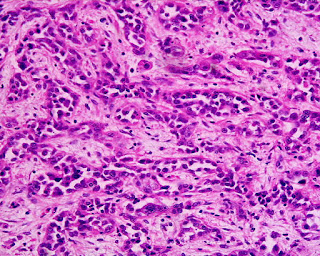Practice question answers B stomach pathology
Practice question answers B Stomach pathology Updated: 03/08/2019 © Jun Wang, MD, PhD 1. D. Ulcer with indurated edge is likely tumor. Microscopic findings of irregular glands with cytological atypia (for this case, dark nuclei with various shape and size) is intestinal type adenocarcinoma . Curling ulcer occurs in patients with severe burn or trauma. Cushing ulcer is defined as esophageal, gastric and duodenal ulcers associated with intracranial disease. Diffuse type adenocarcinoma does not have discrete mass or ulcer, but has signet ring cells. Peptic ulcer has sharp edge without induration or atypical glands. 2. C. Risk factors for intestinal type adenocarcinoma include autoimmune gastritis , helicobacter gastritis , pickled vegetables, cigarette smoking, etc. For this patient, the only thing relevant is helicobacter gastritis . Coronary bypass, diabetes and hypertension are not known risk factors for stomach cancer. 3. A. Helicobacter promotes translocation
